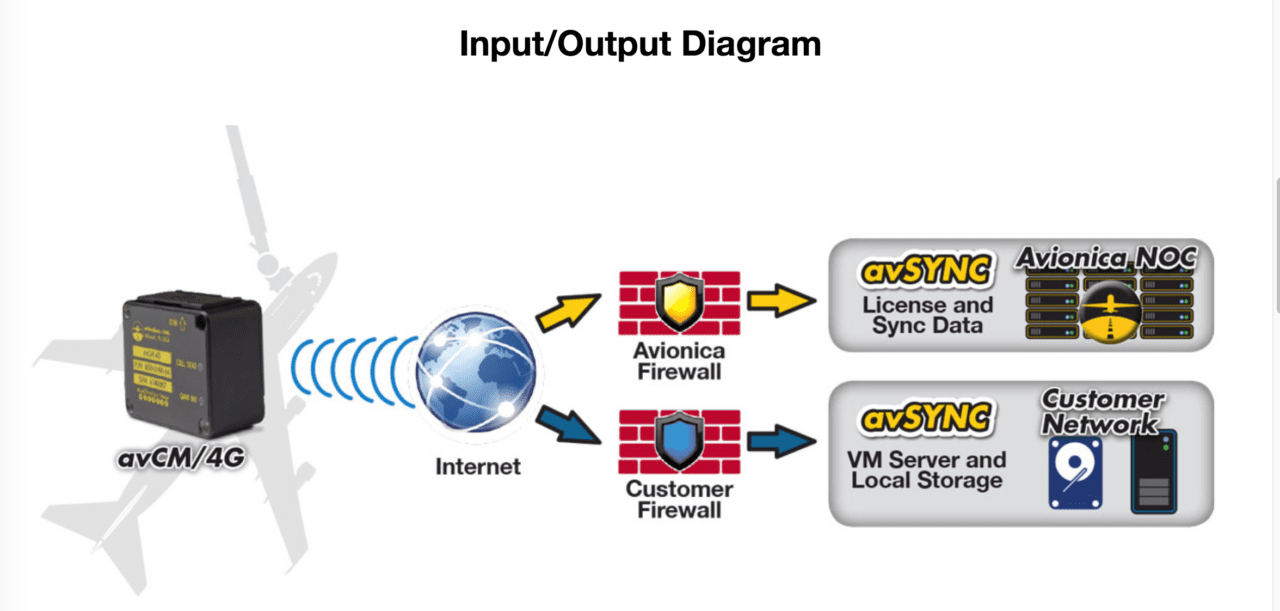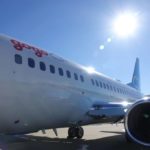
Gogo Reaches 1,300 Commercial Aircraft with IFC
 Gogo revealed that it had installed 477 net aircraft with satellite technology during 2018. Gogo ended the year with 1,296 net commercial aircraft installed with satellite In-Flight Connectivity (IFC). This marks the second consecutive year in which Gogo has installed satellite IFC technology on more than 450 aircraft.
As of Dec. 31, 2018, Gogo had 1,007 aircraft installed and activated with 2Ku technology; 252 aircraft installed and activated with Ku technology; 37 aircraft have been installed with 2Ku technology but not yet recorded as Aircraft Online (AOL); and approximately 1,000 2Ku aircraft in backlog.
“The shift of our global installed fleet to satellite IFC technology combined with our 2Ku availability of approximately 98 percent, continues to improve our customer’s inflight Wi-Fi experience,” said Gogo Chief Executive Officer (CEO) and President Oakleigh Thorne.
Gogo revealed that it had installed 477 net aircraft with satellite technology during 2018. Gogo ended the year with 1,296 net commercial aircraft installed with satellite In-Flight Connectivity (IFC). This marks the second consecutive year in which Gogo has installed satellite IFC technology on more than 450 aircraft.
As of Dec. 31, 2018, Gogo had 1,007 aircraft installed and activated with 2Ku technology; 252 aircraft installed and activated with Ku technology; 37 aircraft have been installed with 2Ku technology but not yet recorded as Aircraft Online (AOL); and approximately 1,000 2Ku aircraft in backlog.
“The shift of our global installed fleet to satellite IFC technology combined with our 2Ku availability of approximately 98 percent, continues to improve our customer’s inflight Wi-Fi experience,” said Gogo Chief Executive Officer (CEO) and President Oakleigh Thorne.
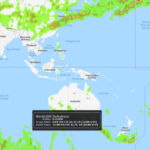
How Qantas is Developing New Connected Cockpit Applications
Qantas A330 and 737 pilots are in the midst of evolving their flight operational data visualization strategy. Software upgrades added to the existing wireless aircraft interface devices on those models will bring the airline into a new era of connected iPad functionality.
We recently caught up with Peter Alexander, manager of technical programs at Qantas Airways, to discuss how the airline has been upgrading its fleet of A330s and 737s to provide its pilots with access to real time turbulence alerting. Right now, the Australian carrier is completing installations of hybrid Ku/Ka-band antennas to enable access to ViaSat’s Ka-band and Australian domestic broadband provider NBN’s Ku-band satellite networks throughout the continent of Australia.The aircraft interface device (AID+) that Qantas has upgraded to features a wireless router, ACARS proxy service and ARINC 429/717 aircraft parameter streaming via port based application programmable interfaces. Inside the cockpit the AID+ enables communication between the wireless iPad applications used by pilots and the embedded ARINC 429 data streams. It also links pilot apps to the internet to enable the use of web charts maps and weather.
“We have been using Apple’s iPad as an electronic flight bag for the last five years and have become very much embedded within the Apple iOS ecosystem. Being able to add the satellite connectivity to that in combination with the AID+ enables GPS own-ship capability for our pilots using Jeppesen charts. Because the AID+ is connected to the ViaSat system, we get retain general Internet capabilities as well,” said Alexander.
Using iPads in combination with the avionics upgrades will also help Qantas pilots to improve their situational awareness by giving them improved access to long range weather. According to Alexander, prior to introducing the iPad, pilots were mostly limited to the 200 nautical mile visibility of weather that the weather radar on legacy aircraft are capable of.
The goal is to give pilots information about weather further out in front of the aircraft using the iPad and connectivity to visualize the Australian Bureau of Meteorology’s weather forecasting throughout all phases of flight.
Teledyne also included a software developer kit functionality within their AID+ which allows Qantas to develop their own third-party iPad applications that can communicate with the AID+.
“The software upgrade to our AID+ effectively establishes a simulator and development tool available free of charge from our website. This tool makes it very easy for airlines or third-party software developers to build and test new applications on the ground that can interface with GroundLink AID+ airborne AID. Qantas, which has a particularly strong IT function within its operation, and has been using this tool to build and test its own and third-party applications prior to deployment on the aircraft,” said Murray Skelton, director of aircraft solution strategy at Teledyne Controls.
The application Alexander is focused on giving pilots access to is a more advanced turbulence alerting mechanism on their iPads. The airline is working with DTN, a Minnesota-based provider of actionable visual data insights primarily through web-based application programmable interfaces.“One of the exciting things we’re working on is in partnership with an organization called DTN that has a deeply advanced turbulence forecasting model, we have an agreement with them in place, where we’re looking to provide real time turbulence alerting inside the flight deck using ViaSat connectivity,” said Alexander.
Navigating around clear air turbulence is one of the crucial uses of connectivity sought by flight operations departments at commercial airlines globally. Delta pilots, for example, use cabin-based Gogo Wi-Fi as connectivity for an EFB app that uses algorithms developed by the National Center for Atmospheric Research.
The app allows Delta’s pilots to set threat index alerts generated from aircraft sensor data. The app’s algorithms use a combination of vertical accelerometer and atmospheric state data, including aircraft-specific behavioral data such as pitch, roll and wind speed to formulate app-based turbulence reports for pilots in real time.
At Qantas, Alexander wants pilots to be able to visualize where turbulence is located using DTN’s advanced forecasting model. DTN’s Flight Route Alerting engine requires Qantas pilots to provide their flight plans up to 36 hours in advance, and the service then generates weather-related impact alerts from our four-dimensional geospatial database throughout the duration of the flight.
Flight Route Alerting features 14 different weather parameters that users can choose from and a core flight hazard dataset within the alerting engine. These features have been enabled through DTN’s investments in developing a suite of mission-critical intelligence around weather-related flight hazards.
They have focused on improving their forecasting models for aviation with a focus on including flight-level specific turbulence, icing, and thunderstorm forecasts, according to Wesley Hyduke, aviation product manager, DTN.
To accompany the text-based alerts generated from DTN’s Flight Route Alerting engine, Qantas is also consuming DTN’s catalog of discrete geospatial weather data so that pilots will be able to graphically view the weather content that generated the alert, Hyduke said.
Starting in the first quarter of 2019, Qantas will begin beta testing DTN’s new NowCast rapid updating short term forecasting application designed to allow aircraft dispatchers and pilots to decide on minimum-cost tactical reroutes during flight if forecast conditions change significantly.
“By providing real time turbulence forecasting for our pilots, it brings more safety and comfort to our passengers as we can optimize flight paths through and around turbulence using a graphical display of what’s happening. Turbulence reporting currently on most commercial aircraft is limited to ACARS text-based data and sometimes that’s hard to visualize with a 4D polygon how its going to impact the aircraft. By having a graphical alert through a connected EFB, it makes it much easier to understand exactly where the turbulence is,” said Alexander.

SmartSky Launch Customer JetSuiteX Unveiled at APEX Tech 2019
SmartSky Networks has named JetSuiteX as the official launch customer of its next-generation air to ground in-flight connectivity network. JetSuiteX CEO Alex Wilcox confirmed their plans to begin passenger carrying flights with SmartSky onboard a fleet of Embraer 135s later this year during his keynote speech at the Airline Passenger Experience Association (APEX) Tech 2019 conference in Los Angeles, California this week. Wilcox evaluated the in-flight connectivity provider’s network during a test flight in a Cessna Citation Excel in early January, according to coverage of his speech published by the media arm of APEX. “The damn thing works,” Wilcox said of the SmartSky technology. SmartSky describes its network as an open connectivity ecosystem with 60 MHz of unlicensed spectrum enabled by air to ground cell towers deployed throughout the U.S. Media and business jet operator demonstration flights conducted by SmartSky between 2016 and 2018 showed how the network has been proven capable of supporting streaming on up to 10 to 12 mobile devices simultaneously. 2018 also featured several achievements in SmartSky’s progress toward the official launch of its network as well. The FAA awarded the first supplemental type certification to SmartSky and parts manufacturing approval to their partners Avidyne and AeroAntenna. The company also introduced a version of its system for aircraft weighing less than 19,000 pounds max takeoff weight. Pentastar Aviation completed the first aircraft installation of SmartSky’s system on an undisclosed customer’s aircraft in October 2018. The system includes duplex blade antennas, cabin wireless access point and an onboard radio. Now, JetSuiteX has become the launch customer for the network, which currently provides coverage on up to 90 percent of business aviation routes. Full U.S. coverage for the network is expected by the end of 2019. “Not only does this underscore our commitment to providing the most innovative air travel solution in the industry, it allows our customers to empty their inbox or share as many JetsuiteX selfies as they wish while still in the air,” Wilcox said.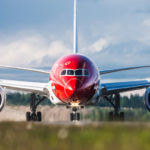
Norwegian Rolls Out GX Aviation on 737 Max, 787 Fleet
Norwegian is rolling out new satellite-powered connectivity across its fleet of Boeing 737 Max and 787 Dreamliners with the help of Collins Aerospace and Inmarsat. Europe’s third largest low-cost carrier began offering free access to Wi-Fi onboard its 737 Max fleet in mid-January, and has recently begun flying trans-Atlantic flights with its connected Boeing 787s as well. Norwegian plans to have the majority of its 787 fleet equipped with the Collins Cabin Connect suite of connectivity services by 2020. “Providing our passengers with the most reliable and robust in-flight Wi-Fi connectivity is very important to us,” said Boris Bubresko, vice president of business development for Norwegian, of their new connected aircraft launch. The broadband connectivity onboard Norwegian’s connected fleet is provided by the Collins Jetwave satellite communications system. Onboard the aircraft, Colllins installed its CabinConnect server and a number of wireless access points to enable connectivity for Norwegian’s passengers and flight crew, according to LeAnn Ridgeway, vice president and general manager of the Information Management Services division of Collins Aerospace. “The brains of the system, the onboard server, enables passengers to access locally stored content on their portable devices. These are all standard components, although we host a custom graphical user interface for Norwegian’s passengers to access the onboard systems and content,” Ridgeway said. Collins’ IMS division is also providing the airtime plan for Norwegian’s service needs related to the operation of GX Aviation. Ridgeway said Collins is also looking to support Norwegian’s future vision of using broadband connectivity for new cockpit services like electronic flight bag and real-time, high-definition weather to operators. Many of these services will require significant amounts of data to be exchanged between the aircraft and operations, she said. “Equipping the aircraft with broadband service opens up a new range of opportunities for the airline to leverage the pipe for flight and cabin crew applications,” Ridgeway said. “An example of the type of content that could be delivered is higher definition graphical weather. The benefit of this information is that crews and airline dispatchers can better assess developing weather conditions, especially on long haul flights, and be more prepared to make proactive decisions to flight plan/route changes to save time and fuel costs.”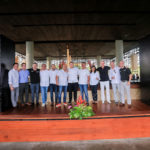
Lufthansa Systems Ushers in New Era of IFEC Business Models
Lufthansa Systems describes its new approach to establishing in-flight entertainment and connectivity (IFEC) business models as a breakthrough for the commercial aviation industry, with a focus on enabling refinancing opportunities for airlines through the use of e-commerce partnerships and platforms. Garuda Indonesia’s low cost subsidiary Citilink is the first airline to start flying with connectivity enabled by the new refinancing business model. Lufthansa Systems’ first business partner behind the new option is Mahata Aero Teknologi, which is providing an e-commerce solution based on commercial offers and advertising partners. Those advertising partners provide a path toward Citilink and other airlines allocating the cost of providing internet services to passengers free of charge. “Many providers offer financing models, but they often lack an understanding of the aviation industry. We are closing this gap with our expertise in IFEC solutions and with BoardConnect,” said Jan-Peter Gänse, head of passenger experience products & solutions at Lufthansa System of the new approach to IFEC business models. BoardConnect is Lufthansa’s custom onboard open source IT platform that provides passenger access to Inmarsat’s GX Aviation-powered Wi-Fi connectivity. Mahata Aero Teknologi is working alongside Lufthansa Systems in addition to Inmarsat and Lufthansa Technik. While Inmarsat, the leading satellite provider, is supplying the broadband Internet connection with its global GX Aviation network, Lufthansa Technik is providing the hardware and performing the installation design and certification. Garuda Indonesia signed an agreement with Lufthansa Systems to enable the use of GX Aviation via BoardConnect in December. The Indonesian carrier has not indicated whether it will also look to add the new business model to its mainline network fleet of aircraft. “The first two customers using our solution have shown that we can provide models to suit low-cost carriers as well as airlines with large fleets,” Iwan Setiawan, managing director of Mahata Aero Teknologi said.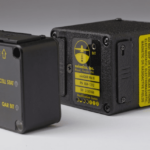
Avionica VP Talks Aircraft Cloud and QAR Data SAAS on avSYNC
Avionica has unveiled the second version of its automated aircraft data synchronization service, avSYNC 2.0, with new cloud computing and improved cellular and Wi-Fi downloading and uploading capabilities. The Miami, Florida-based avionics manufacturer describes avSYNC as a web-hosted software as a service (SAAS) application designed to optimize the process used by commercial aircraft maintenance engineers and technicians’ processes for acquiring and analyzing aircraft performance data. Now, under avSYNC 2.0, Avionica has added the power of Microsoft’s Azure cloud computing service as part of a new product line. Avionics International recently caught up with Avionica VP of Business Development Sean Reilly to discuss the public unveiling of avSYNC 2.0. Reilly confirmed Boeing 737 private charter operator Miami Air as the launch customer for avSYNC 2.0 and noted that 20 airlines using avSYNC are upgrading to 2.0 as well. He describes avSYNC 2.0 as focusing on improving Avionica’s ability to support the downloading and uploading of aircraft data, information and software to and from the aircraft. “We have built the platform around the Microsoft Azure Cloud Services. This not only allows us to make the data easily accessible, but it enables us to keep data in-country, such as Europe [and] China and never travel back to the United States, unless required,” said Reilly. Aircraft equipped with either Avionica’s mini QAR and avCM communications module or the avRDC with avCM are capable of using avSYNC. The technology’s cache and forward configuration allows aircraft mini QARs and other devices to periodically connect to the virtual private network (VPN) and servers. Aircraft data such as engine temperatures and pressures are conveyed directly to and the company’s mini QAR, secureLINK, aviONS and avRDC avionics over encrypted VPN tunnels. According to Reilly, avSYNC’s aircraft data transfer capabilities are more focused on enabling FOQA data download and upload while the aircraft is on the ground. While airborne, a different set of data in “small snapshots” is available, although that is not coordinated with avSYNC, he said. The avSYNC service records flight data from the aircraft’s digital flight data acquisition unit after the aircraft has landed and uses a cellular or local Wi-Fi network connection to transmit the airline’s requested aircraft FOQA and other data requirements. The minimum local system requirements for operators using avSYNC include two gigabytes of random access memory for the virtual machine. Systems must also feature dual core or better computer processing capability. “The 2.0 software has increased security features and redundancy for downloading data at different location around the world. This helps keep data in-country if the airline requires. Also, avSYNC 2.0 gives us the ability to push large data content [ such as FMS databases] to the aircraft, not only download QAR data from the aircraft,” said Reilly. Avionica has expanded and extended the onboard capabilities of its satellite communications and data transmission avionics in recent years through new industry partnerships, supplemental type certificates and industry partnerships. In May, the company formed a new joint venture with GE Aviation, extending an ongoing aircraft edge processing and wireless connectivity partnership the two companies first established in 2016. On avSYNC 2.0, Avionica is working with another division of GE as well. “We’ve rolled avSYNC 2.0 out to airlines and business jet operators working with our GE Digital partners for C-FOQA data analytics,” said Reilly.
Viva Air Equips A320s With Teledyne Sim Service, Wireless Avionics

Viva Air Airbus A320s will be equipped with data loading, transmission and cellular service avionics from Teledyne Controls. Photo: Teledyne Controls

Is the Aero Market Ready for Takeoff?
Back in the Jurassic Age, the big U.S. television networks distributed programs to affiliate stations over AT&T Long Lines. Then PBS and HBO showed that satellite offered a better deal, greater reliability, and less hassle, and the broadcast business for satellite was born. My friend Richard Wolf was in charge of distribution for ABC since that same Jurassic Age, so I asked him a question. Why did the U.S. networks build their own uplink centers when there are so many teleport operators who can do it better, for less money, by sharing their facilities among many customers? Resting his club against one wall of the cave, Rich pondered the question. They couldn’t, he said, not then. If his network could have found service providers to handle the complexities of program origination by satellite, they would have. But the networks were early adopters and it took time for today’s mature, full-service network of teleport operators originating programming to form.Cost and Capacity
The industry finds itself in a similar position today in the aeronautical market. The development of In-Flight Connectivity (IFC) has long been dogged by cost and capacity challenges. The terminals were expensive to buy and to install, so service providers seeded the market by offering to buy the equipment themselves in return for a share of the profits. Modems and other vital equipment also proved problematic in a vehicle traveling across satellite beams at high speed. Capacity was limited and pricey. And yet — the demand is clearly there. One in two passengers would happily trade a free alcoholic drink for good Wi-Fi on board, according to Inmarsat’s Inflight Connectivity Survey. Sixty-seven percent of passengers say they would be more likely to rebook with an airline offering good Wi-Fi. Almost nine out of ten business travelers say they would use IFC to work — if it worked as they needed it to.Falling Barriers
One by one, the barriers to a proper Wi-Fi experience in the air are toppling. The success of High-Throughput Satellites (HTS) has increased capacity and driven down its cost. Viasat entered the IFC market with its Ka-band HTS service in 2013 and by September 2018 had 898 aircraft in operation, an astounding 50 percent increase from the previous year. The global Viasat 3 service expected by 2020 will take an even stronger price-performance model global. Meanwhile, Inmarsat’s Global Xpress service began targeting aviation this year through partnership with iDirect, and Panasonic is growing its IFC capabilities through deals with Eutelsat for its 172B over Asia and the launch in 2020 of Extreme Throughput Satellite service aboard APSTAR 6D. In its 2018 report, The Future of Inflight Connectivity, Valour Consultancy anticipated the number of aircraft with IFC will reach almost 21,000 by the end of 2026, up from 7,500 today. That growth is partly predicated on having flat-panel, electronically-steerable antennas certified for in-flight operation. None are available today. In 2017, however, Phasor announced a partnership with Astronics AeroSat to produce an aeronautical terminal for commercial airlines. At the end of that year, Kymeta Vice President (VP) of Business Development and Sales Steve Sybeldon told Via Satellite that the company would be launching a product for commercial airlines — but did not expect it to reach the market for several years. Yet it seems clear that the companies will eventually achieve the goal, such are the potential advantages their technology can offer.Shake Hands with the Devil
As the big hurdles fall, the future of the aero market will increasingly depend on the details. And we all know who lurks there. Anyone who shops on Amazon has marveled at the perfection of that online platform compared with just about everything else. What we don’t see is the crazy obsessiveness that drove the company over years to iron the devil out of every tiny detail that could stand between you and a purchase. Take-up rates on IFC today remain pitiful: 5 to 8 percent, according to Valour. Pricing and capacity issues have clearly been at fault, and the rate will naturally rise as they improve. But to achieve its potential, IFC will have to get really good at the small stuff. Here’s an example. One of the challenges of IFC is the speed with which planes cross between satellite beams, and the Doppler distortion that results when planes approach or move away from a satellite. Beam-crossing at speed can cause drop-outs, and Doppler effects can scramble signals sufficiently to make them unintelligible to the onboard router. For Panasonic, Newtec in Belgium developed a specialized modem that employs three receivers to ensure that the modem is receiving from a new beam before it releases the old one, as well as being able to support live TV. Software on the modem also tracks, predicts and corrects in advance for distortions to the data caused by speed. The result is internet on board without the interruptions — something that customers are more likely to pay for. In July, NSR Analyst Claude Rosseau noted a trend for airlines to increasingly want control of the IFC running on their aircraft. They want the ability to brand the online experience, use it to build passenger loyalty and test pricing options, such as a set IFC fee per flight. At the same time, IFC providers are eager to change that deal where they foot the bill for aircraft IFC equipment in exchange for a share of revenues. Such arrangements no longer seem necessary to seed the market. If airlines do decide to trade their capital for control, it could provide the motivation needed to iron out those devilish details and make the aero market truly take off. Robert Bell is executive director of the Space & Satellite Professionals International. SSPI produces the Better Satellite World campaign, which dramatizes the immense contributions of space and satellite to life on Earth. More at www.bettersatelliteworld.com.
Robert Bell is executive director of the Space & Satellite Professionals International. SSPI produces the Better Satellite World campaign, which dramatizes the immense contributions of space and satellite to life on Earth. More at www.bettersatelliteworld.com.

Competition Appeal Tribunal Rules in Favor of Inmarsat, Ofcom







